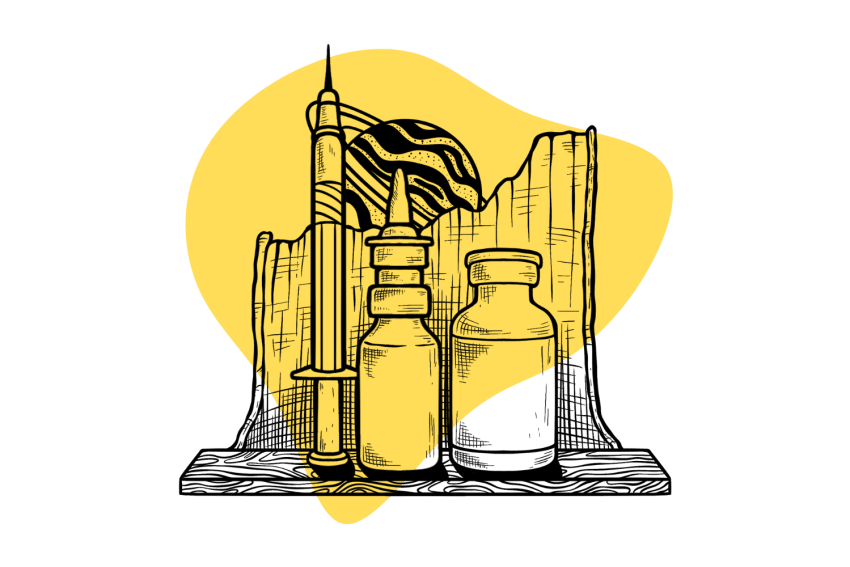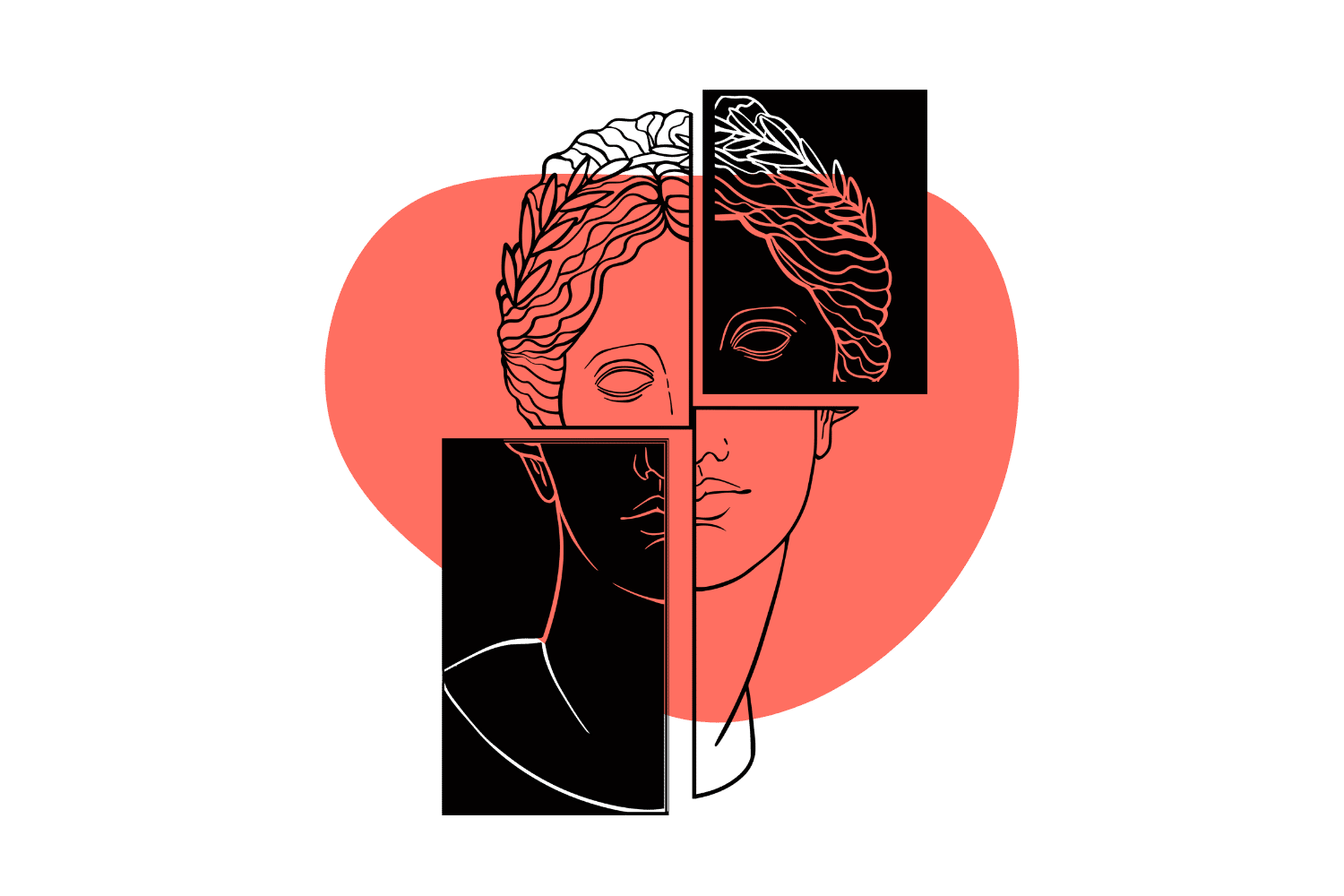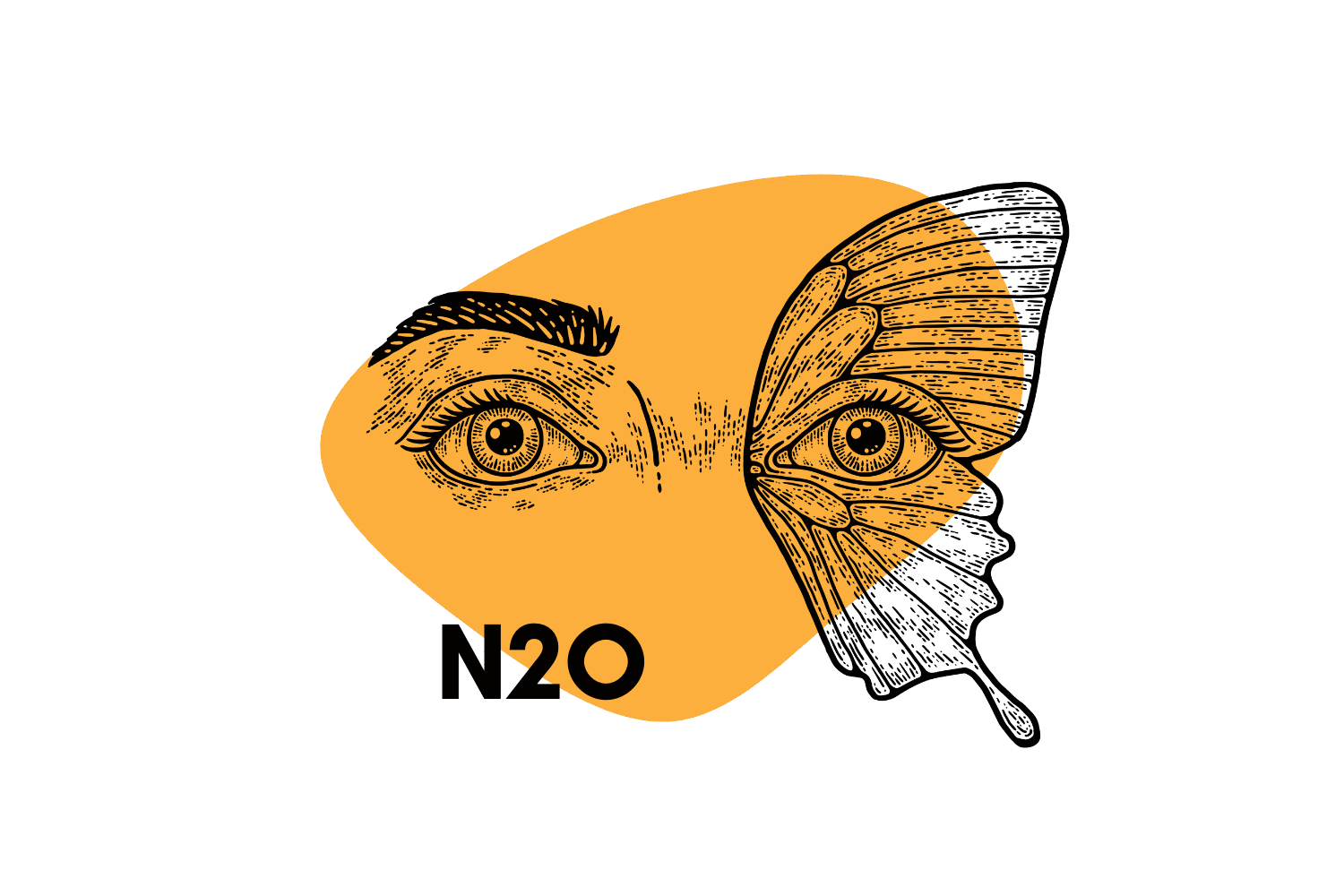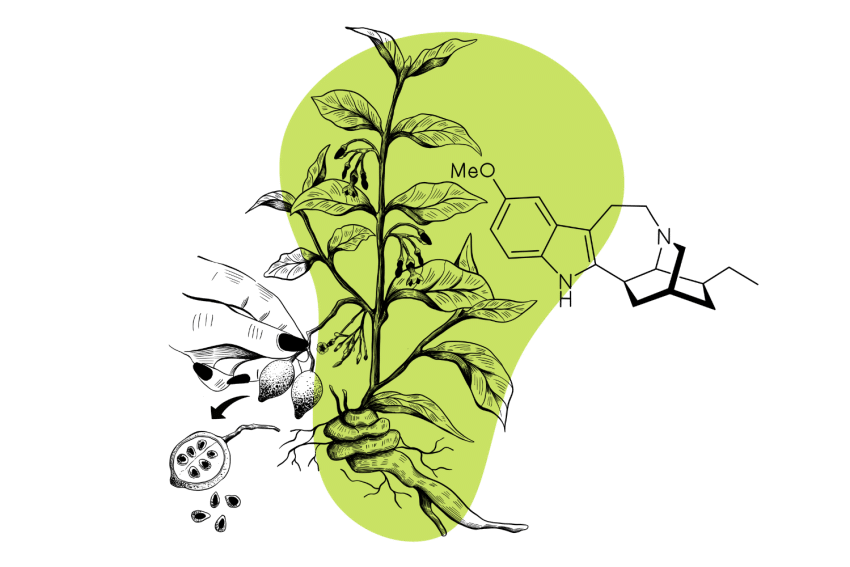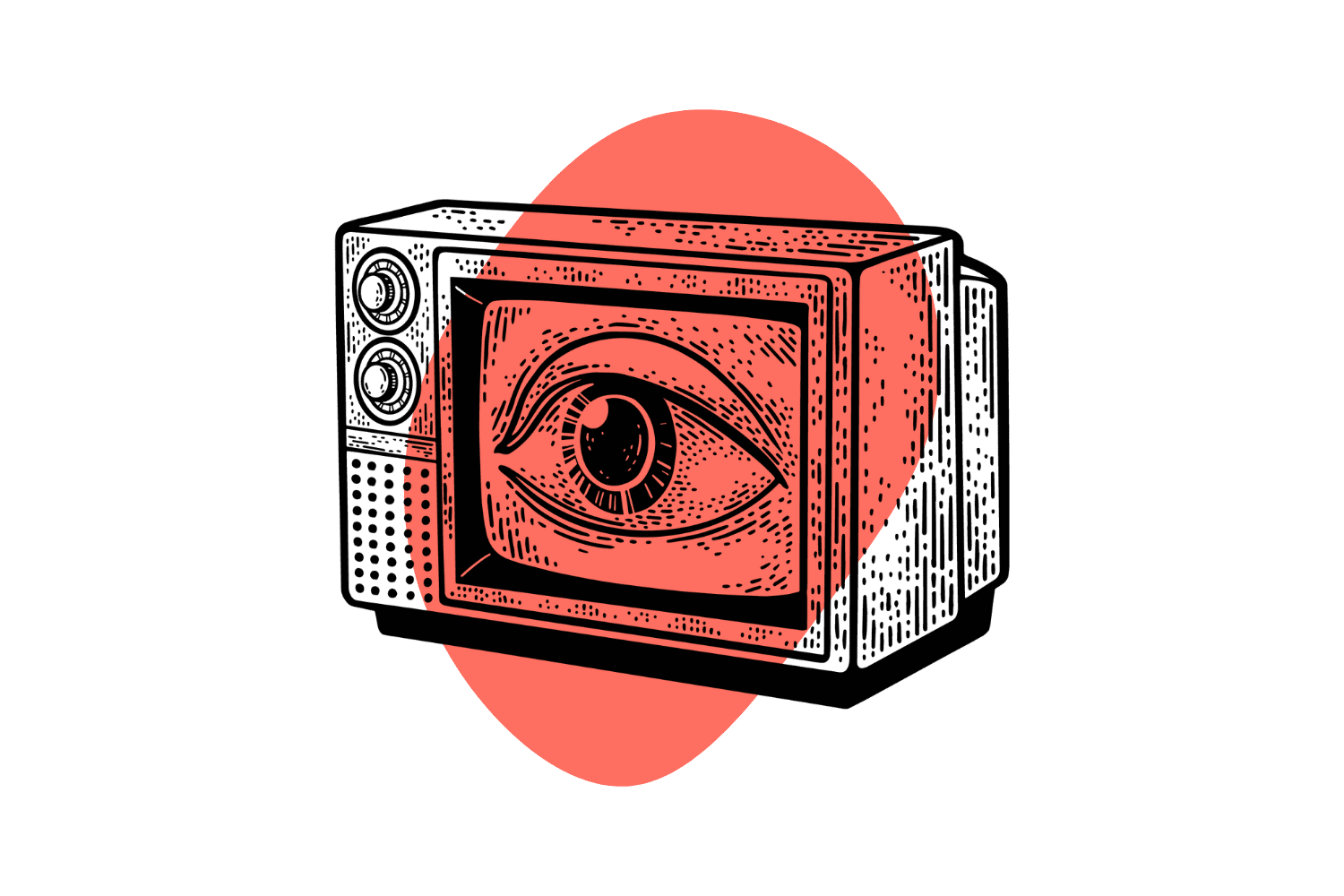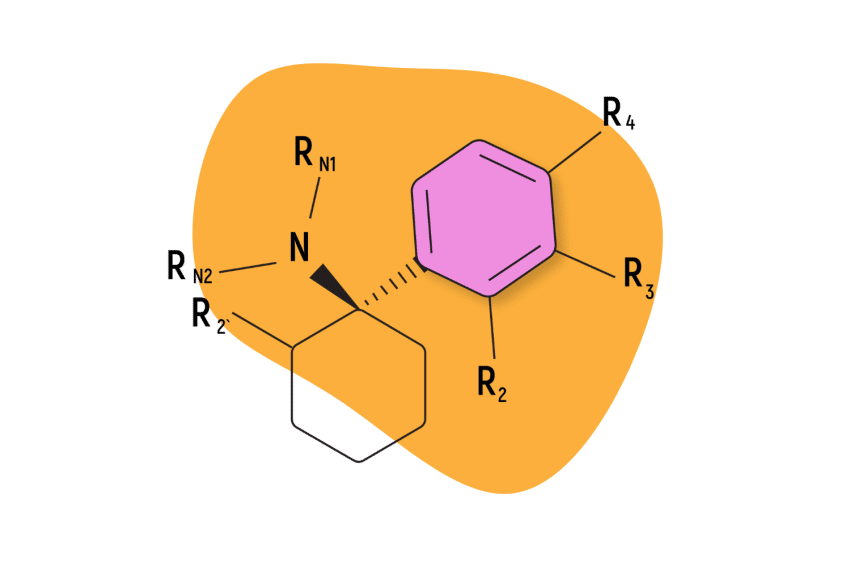PCP (Phencyclidine) & Analogs
Angel dust isn’t quite as bad as it’s made out to be — but it certainly carries a higher level of risk than most psychedelics.
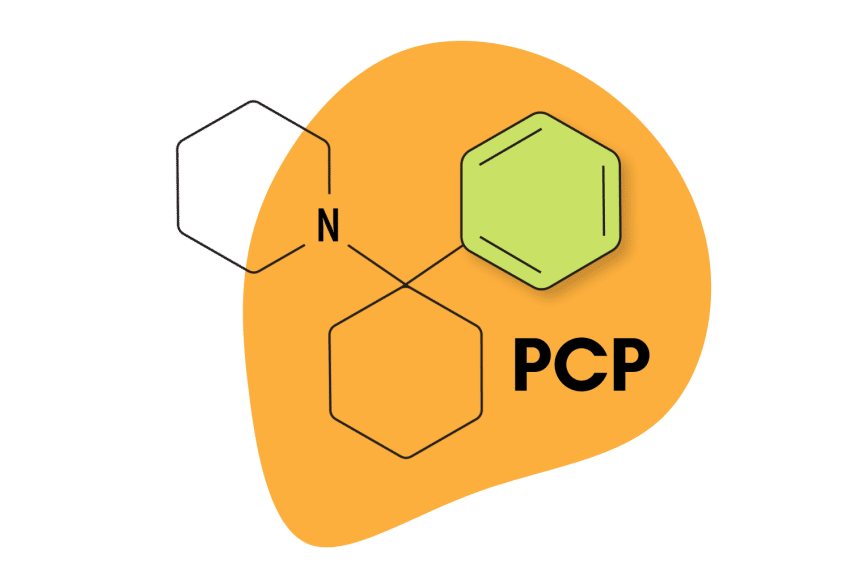
PCP (phencyclidine) has been around since the 1960s. After a brief stint as an analgesic, it was eventually banned and ended up on the street.
The most common method of using PCP is in the form of “Sherm” or “Fry” — which refers to marijuana flower or cigarettes soaked in liquid PCP.
This drug has been demonized in the media for decades, and while the effects of PCP are undeniably destructive, the reporting on dust has been largely overexaggerated.
Here, we take an unbiased look at PCP and explore the effects, risks, and history of this powerful dissociative psychedelic and its analogs.
What is PCP?
PCP (phencyclidine) is a powerful synthetic hallucinogenic and dissociative drug closely related to ketamine. It’s a member of the arylcyclohexylamine class — which contains a wide range of powerfully dissociative and psychedelic compounds.
PCP was first discovered in 1956 by Dr. Victor H. Maddox while working for Parke Davis Laboratories [1].
About a year after its discovery, it was already in use as an anesthetic during surgery under the drug name Sernyl. At first, PCP appeared to be a promising alternative to opioid-based anesthetics because it lacked the risk of respiratory depression that made opiates dangerous in high doses.
However, after just a few years, PCP was banned (1965) in medical practice due to unpredictable responses and a high risk of long-term side effects following treatment. Roughly 10–20% of patients developed delirium lasting more than 12 hours.
Ketamine replaced PCP in the early 1960s because it was safer, the effects were more predictable, and it didn’t last as long as PCP.
By the time the medical field stopped using PCP, it had already made its way onto the street. While it has never been as popular as other psychedelics, it’s still used routinely in some circles for its dissociative and euphoric effects.
As a dissociative drug, PCP works by inducing a sense of separation or detachment from the self or the environment. Its hallucinogenic and numbing effects on the body help create this feeling. Other members of this class include DXM (dextromethorphan), ketamine, nitrous oxide, methoxetamine (MXE), MK-801, and xenon gas.
There are also a variety of PCP analogs with similar psychoactive effects.
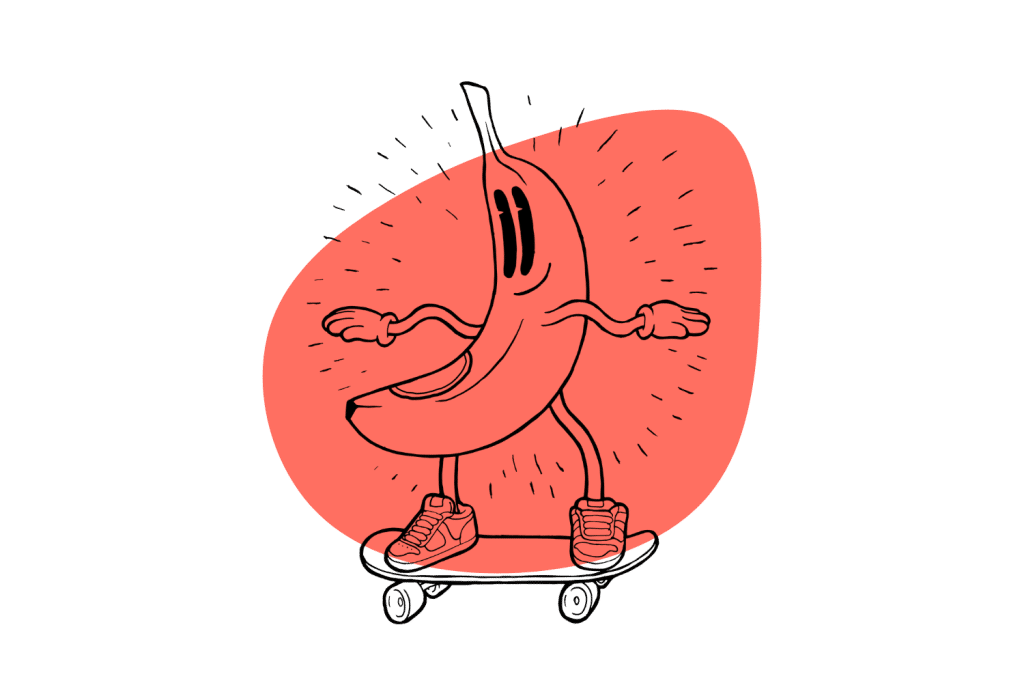
PCP Specs:
| Active Ingredient | I-(I-phencyclohexyl)piperidine — (AKA Phencyclidine) |
| Level of Risk | Moderate to High |
| Other Names | Sherm, Fry, Angel Dust |
| Most Common Side Effects | Psychosis & Seizures |
| Duration of Effects | 4–8 Hours |
| Legality | Illegal Worldwide |
Guidelines for the Responsible Use of PCP
- 🐍 I understand why psychedelics should be treated with respect
- ⚖️ I’m familiar with the laws for PCP in my country & state
- 🍄 I’m familiar and confident in the dose I’m taking
- 🧪 I’ve tested a sample of the substance I’m using with a drug testing kit
- 💊 I’m not mixing any medications or other substances with PCP
- 🏔 I’m in a safe & comfortable environment with people I trust
- 🐺 One of the members of my group is responsible and sober (AKA a trip sitter)
- ⏳ I have nothing important scheduled during or after the trip
- 🧠 I’m in a sound & healthy state of mind
- ❤️ I don’t have any underlying health issues — don’t take PCP if you have underlying heart, neurological, or psychiatric disorders
- 🌵 I understand the risk of dehydration — it’s easy to become dehydrated on PCP
What Does PCP Look Like?
Pure PCP is a fine white powder, but adulterants and contaminants are common. Most PCP has a light brown or grey color due to the presence of impurities. It’s usually sold in small plastic bags or folded up in some tinfoil.
PCP can also come dissolved in water or alcohol and is sometimes colored with dyes. Tablets and capsules are also common.
Vendors selling PCP will often charge for dipped cigarettes called “Sherm Sticks” or “Fry” — which refers to any herb material (marijuana, oregano, mint, tobacco) that’s been sprayed or dipped in liquid PCP and given time to dry.
Other Names For PCP

As a street drug, PCP has many names. The most common name, by far, is “Angel Dust” or simply “Dust.” The terms “Sherm” and “Fry” are also common in the United States.
Here’s a list of some common names for PCP:
- Angel dust
- The Peace Pill
- Lovely
- Whack
- Ozone
- Embalming Fluid
- Rocket Fuel
- Fry
- Supergrass (PCP + weed)
- Sherm or Sherm Stick (PCP-Dipped Cigarette)
What’s The Dose of PCP?
The effects of PCP are highly dose-dependent. Low doses are more stimulating and euphoric — high doses are much more dissociating and hallucinogenic.
What makes PCP so dangerous is the widespread lack of production standards and clandestine producers making bad PCP. The dosages for various PCP powders and liquids are all over the place — which is a problem because of the narrow dosage window for this drug.
People often aim to take a lower dose of PCP but mistakenly ingest too much — either due to an error in measuring the substance or not properly assessing its potency.
For example, dipped cigarettes can deliver substantially different doses, depending on the dilution of the liquid PCP. Doses can range from 2 to 30 mg of PCP per cigarette. One experience with a cigarette may feel manageable or even enjoyable, butut the next dose could contain two, three, or four times as much PCP — inevitably leading to a bad trip (or worse).
Comparing the Doses of PCP
| Consumption Method | Low Dose | Moderate Dose | High Dose |
| Oral Consumption | 1–5 mg | 5–15 mg | Over 15 mg |
| Intranasal Consumption | 1-3 mg | 3–8 mg | Over 8 mg |
| Inhalation | 1-5 mg | 5–15 mg | Over 15 mg |
What Does PCP Feel Like?
In general, the effects of PCP are similar to other dissociatives like ketamine and DXM — but much more intense and unpredictable. It begins with bloodshot eyes, slurred speech, and a feeling of drunkenness and depersonalization. Users often feel like they’re sitting outside their body, watching events unfold with limited capacity for conscious control.
The PCP experience is deeply strange, confusing, and hard to describe or remember. Language is often insufficient for describing the effects of PCP with any accuracy. Trip reports often include statements like “I was walking behind myself” or “I was unaffected by time.”
PCP trip reports often include terms like floating, numbness, dreamlike states of consciousness, feelings of hostility or aggression, confusion and frustration, fear, paranoia, lack of appetite, a “speedy” sensation, insomnia, and euphoria.
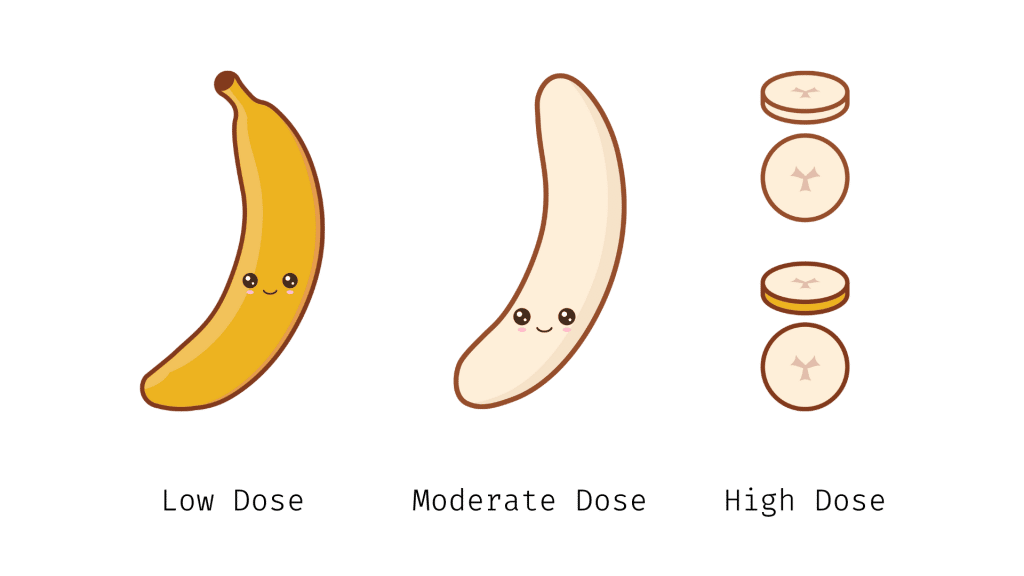
Many people who take PCP get a feeling that they’re moving in and out of consciousness (blackouts) — each time, finding themselves in a different location or situation without any idea about how they got there or what happened along the way. This is sometimes referred to as “dissociative time-travel.”
Despite how common blackout experience is, PCP is only sedative in high doses, so users who have essentially “checked out” of conscious experience continue to display bizarre or erratic behavior.
Some users become hostile and angry; others become scared or depressed, and some even feel euphoric and inspired to create art or dance.
This drug’s effects on mood and emotions are completely unpredictable. Every person and every trip is entirely different. Like most psychedelics, the user’s mindset before going into the experience plays a big part in how it affects them. If people take PCP in an unsafe or uncomfortable situation, or if they take it while depressed, PCP is going to inflate these feelings many times over.
In high doses, PCP is undeniably dangerous. It produces erratic and often violent or self-destructive behavior. Seizures and dehydration become more of a risk at higher doses, and long-term side effects involving cognitive dysfunction or HPPD (hallucinogen persisting perception disorder) are also common.
The acronym used by medical professionals to identify the effects of PCP is called RED DANES:
- Rage
- Erythema (skin redness)
- Dilated pupils
- Delusions
- Amnesia
- Nystagmus (back and forth movement of the eyeballs)
- Excitation (stimulation)
- Skin dryness
PCP Effects Matrix
How Long Does PCP Last?
PCP kicks in quickly — within seconds if smoking or injecting, minutes if snorting, or up to 45 minutes if taking orally.
The total experience can vary a lot from one user to the next, but an average PCP trip will last around 4 to 8 hours. Some people experience effects for up to 48 hours after first taking it.
PCP remains detectable in the urine for up to two weeks, the blood for 24 hours, and the hair for 90 days or longer.

How is PCP Used?
Pure PCP freebase is a fine white powder. The powder can be pressed into tablets, snorted, taken orally, injected, or smoked. Liquid PCP is made by dissolving the freebase powder in alcohol or other solvents.
“Sherm” or “Fry” is made by soaking or spraying marijuana or other herbs in liquid PCP and then allowing the solvent or alcohol to evaporate. It’s also common to dip cigarettes in PCP, resulting in what’s commonly referred to as a “Sherm Stick.”
How Does PCP Work?
PCP works primarily by blocking the NMDA receptors in the brain. It also blocks the reuptake of monoamine neurotransmitters such as serotonin, dopamine, and norepinephrine.
By blocking NMDA in the hippocampus and prefrontal cortex, PCP causes a widespread disruption of higher-order cortical functions — including visual and auditory processing, memory, and focus.
Like ketamine, PCP is considered a “dirty drug” — which means it doesn’t target just one receptor type. It binds to various receptors throughout the brain, blocking some and activating others. This makes it difficult to quantify the effects of the drug since these effects are the result of several different interactions taking place inside the brain.
One of the effects of PCP is to activate dopamine neurons in the midbrain — which are involved with the pleasure response and reward system. Part of the addictive qualities of PCP is thought to be the result of this interaction.
A lot of the effects of PCP resemble schizophrenia. In fact, some animal studies actually use PCP, MXE, or ketamine to chemically induce schizophrenia so that researchers can study it [4].
The Dangers of PCP
PCP is undeniably dangerous. It can be used relatively safely in the right dose, but only if moderation is respected.
Contamination and purity issues are also a major problem for PCP because of how dose-dependant the effects are and the abundance of PCP analogs, each with different dosage requirements.
At lower doses, PCP is a dissociative, a mild stimulant, and an analgesic. In high doses, it can cause delusions, paranoia, anxiety, seizures, coma, and death. It’s also common for people to become hostile or self-destructive while under the influence of large amounts of PCP.
Using PCP for extended periods of time comes with a high risk of long-term consequences.
1. Psychological Harm
PCP can wreak havoc on ones’ mental health. The experience is often terrifying, inflating the fears and paranoia already present in normal waking consciousness. Some of this trauma comes from acts performed while under the influence of the drug — which are often done because of uncontrollable impulses or during blackout states [2].
Many people who use PCP report lasting psychological trauma from the experience, and they are more likely to suffer from adverse psychological events while under the effects of the drug.
PCP has also been shown to cause physical changes in the brain with long-term use — lasting as much as one year or more after stopping the drug. Studies have found signs of reduced concentration, difficulty making sound judgments, delusional thought loops, and increased risk of depression and anxiety.
Animal studies examining the effects of PCP and related chemicals found that repeated exposure led to the formation of vacuoles with significantly less white matter than the surrounding tissue. This form of brain damage is referred to as Olney’s lesions [3]. The same findings haven’t yet been reported with ketamine use but are even more common with MXE and MK-801.
2. Physical Harm
In lower doses, PCP mostly affects the mind — but users may also experience an increase in blood pressure, heart rate, and body temperature.
In higher doses, PCP is much more damaging to the body and can cause dangerously high blood pressure, heart arrhythmias, seizures, coma, and death. Higher doses significantly increase the risk of dehydration — partly due to the drug’s direct effects on the body and partly due to the cognitive effects leading users to ignore the need for food or drink.
Higher doses of PCP are also linked with self-destructive or suicidal behavior. The risk for accidental injury is increased substantially when the user is unable to properly interface with their environment. People have fallen over balconies, been hit by cars, beaten up, and much more.
Injecting PCP with shared needles carries an increased risk of contracting HIV, hepatitis, or other blood-borne infections. Skin and blood infections can appear if the needles aren’t sterilized properly before use.
PCP also reacts negatively with many drugs, especially sedatives or stimulants. Taking PCP with sedatives like benzodiazepines or alcohol can lead to coma and death. If mixed with stimulants, PCP may exacerbate the impact on the cardiovascular system and lead to an increased risk of seizures, stroke, or heart failure.
Potential long-term side effects of repeated PCP use include:
- Difficulties with speech
- Poor concentration & memory
- Anxiety & depression
- Bladder pain
- Incontinence
- Gastrointestinal problems
- Deficits in memory and cognitive function
- Gray and white matter abnormalities (brain cell death)
3. PCP Addiction
Despite the negative effects of PCP, it can become habit-forming and eventually lead to a full-fledged addiction.
One of the reasons for this is the capacity of PCP to provide a sense of “nothingness.” People who are having a hard time, who are depressed and have suffered various traumas throughout life, are more likely to become addicted to substances that give them a release from these feelings — even if that release itself is uncomfortable.
Once in a dissociated state, users feel a complete lack of attachment to themselves or the world around them. Theyno longer feel the pain, anxiety, or shame that comes along with this attachment. When the effects of the drug wear off, users are forced back into their normal waking reality — along with all the miseries they felt prior to taking PCP (often with a few new ones to add to the list because of something that happened while using PCP).
People who use PCP frequently will often go on “runs” — which involve binges that can last several days or weeks. Users often don’t sleep, eat, or take care of physical needs during this time. Runs are usually followed by periods of sleep that can last another couple of days.
The resulting depression or consequences of their actions while under the influence of PCP only make them more prone to using the drug as a means of escaping the uncomfortable reality they find themselves in.
The more often someone uses PCP, the more addictive it gets. PCP withdrawal symptoms involve severe mood swings, cravings for the drug, aches and pains, depression, extreme lethargy, and inability to concentrate.
As is common with other dissociative drugs, PCP has a tendency of gradually replacing one’s internal dialog with nonsense that only the individual can understand. This only serves to further distance PCP users from their friends, family, and other members of society.
PCP Analogs
There are a lot of PCP analogs on the market now. They’re made by modifying the molecular structure of PCP slightly and then testing it to determine whether they’re active or not.
Here’s a list of some of the more well-known PCP analogs on the market today:
- O-PCE
- 3-HO-PCP
- 3-MEO-PCP
- 3-MEO-PCE
- 3-Flouro-PCP
- 4-MeO-PCP
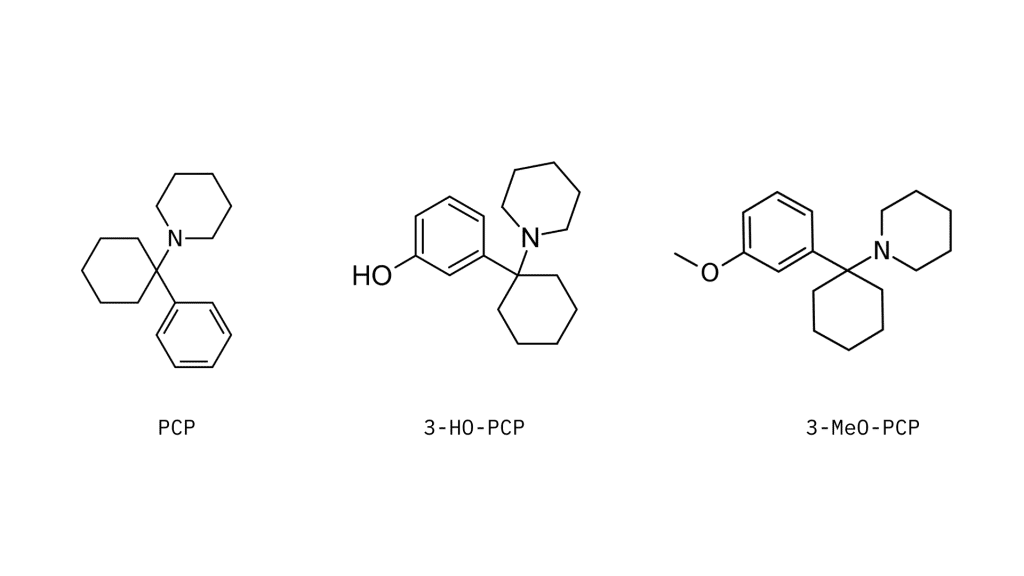
How to Test For PCP (Harm Reduction)
PCP is difficult to test using drug reagents because most won’t change color with this compound. PCP analogs like 3-MeO-PCP or 3-OH-PCP tend to be easier to test for.
With that said, it’s still important to test PCP to ensure the white powder or clear liquid you’re holding doesn’t contain something more dangerous such as fentanyl, MXE, or synthetic cathinones.
The Mecke, Marquis, and Mandelin reagents are useful for testing for PCP and PCP analogs:
- PCP — Meck reagent turns light pink, Marquis remains clear or turns slightly blue, Mandelin has no color change, and Morris turns pale green.
- 3-MeO-PCP — Marquis should turn blue, Mecke should turn yellow, and Mandellin should turn green.
- 3-HO-PCP — Marquis turns pinkish purple or brown, Mecke turns light purple, and Mandelin turns green (sometimes brown).
- Ketamine — Marquis has no color change, Mecke has no color change, Mandelin turns deep red or orange, and Morris turns violet-blue.
- MXE — Marquis turns yellowish, Mecke turns light brown, Mandolin turns greyish or brownish, and morris turns pale green.
- O-PCE — Marquis turns light yellow, Mecke has no color change, Mandelin has no color change, and Morris turns pale green.
Red flags to watch out for:
- If the Marquis turns orangish brown, Meck turns green, and Mandelin turns olive green, it’s likely the sample contains high quantities of fentanyl.
- If the Marquis turns dark brown, Meck turns black, and Mandelin turns brown, the sample likely contains 25I-NBOMe, which is extremely powerful and can be deadly if taken in high doses.
- If the Marquis turns yellow, Mecke light brown, and Mandelin greyish-brown, your sample likely contains MXE (methoxetamine).
→ Learn more about how to test your drugs with reagent test kits.
Is PCP Legal?
No, PCP is illegal all over the world. It’s considered a Schedule II drug in the United States — which suggests PCP has a high probability for misuse but clear medical applications.
There are no legal forms of PCP in use anymore. It hasn’t been used in medical practice since the 1960s, so there are no longer any registered pharmaceutical companies making the drug. The vast majority, if not all production of PCP takes place in clandestine labs and is sold on the street illegally.
There are a handful of PCP-analogs, some of which are “legal” in countries that lack analog laws.
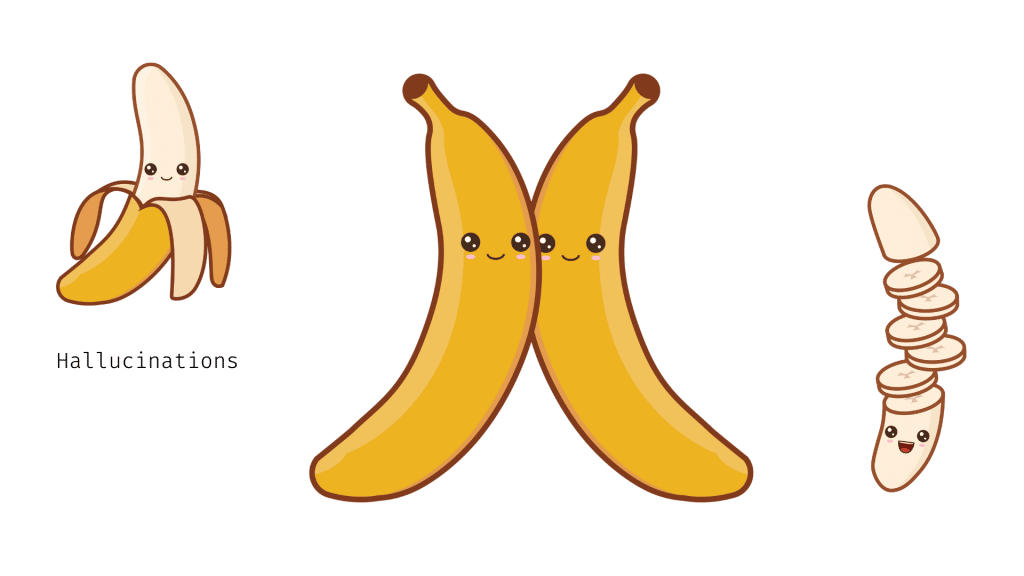
Final Thoughts: Is PCP Safe?
PCP isn’t quite as dangerous as the media has made it out to be — but it certainly comes with its fair share of risks.
The biggest risk of PCP comes from adulterated or contaminated samples, high doses, and repetitive use.
Recently there’s been an influx of PCP analogs being sold as “legal” alternatives. The most popular options are O-PCE and 3-OH-PCP.
Some analogs appear to be safer than conventional PCP and are less likely to produce full-fledged delusions, blackouts, or seizures. However, there are also plenty that have already proven to be even more dangerous than PCP.
Regardless, none of them have been properly tested for safety.
If you or a loved one suffers from PCP addiction, seek out help through your local drug addiction hotline (USA, Canada).
References
- Li, L., & Vlisides, P. E. (2016). Ketamine: 50 years of modulating the mind. Frontiers in human neuroscience, 10, 612.
- Rawson, R. A., Tennant Jr, F. S., & McCann, M. A. (1981). Characteristics of 68 chronic phencyclidine abusers who sought treatment. Drug and Alcohol Dependence, 8(3), 223-227.
- Olney, J. W., Labruyere, J., & Price, M. T. (1989). Pathological changes induced in cerebrocortical neurons by phencyclidine and related drugs. Science, 244(4910), 1360-1362.
- Murray, J. B. (2002). Phencyclidine (PCP): a dangerous drug, but useful in schizophrenia research. The Journal of psychology, 136(3), 319-327.

